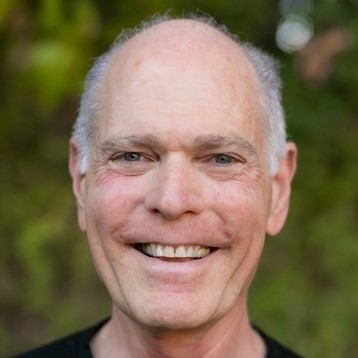Since it's inception, yoga has been an integral part of the Emory Healthcare Veterans Program. During the intensive two-week program, veterans take one hour of yoga three times a week where they learn to release physical and emotional pain. Mr. Yura says that although some students are more engaged than others, it is rewarding for him to see the extent of people's responses to the practice, including embracing what they have learned to use post-program like specific movements for lower back release, breathing techniques, and strategies for calming the nervous system during a reactive situation.
Marty Yura is a yoga teacher and co-owner of Vista Yoga. A veteran with a Masters in Psychology, he served as a psychologist in the military for five years. He now teaches yoga to civilians as well as to veterans with PTSD and other physical and mental health conditions through the Emory Healthcare Veterans Program.
For information about PTSD, please visit The Treatment Hub.
I’ve taught at Emory Healthcare Veterans Program for about four and a half years now. Yoga has been a part of the program from its inception. It’s an intense program lasting two weeks’ time. The groups are staggered, so one group starts one week, and then the following week another group begins. So the exposure is, for any given week, to two groups combined for the entire program and certainly for the yoga portion as well. It’s an hour session three times a week and it’s hard to get a gauge other than a subjective gauge on how people respond to it, but the general consensus seems to be positive. And from my perspective, at ground level if you will, you can tell when some people are engaged, some people are not engaged. But all in all, maybe I can say it’s very rewarding for me because I can see to an extent people’s response to the yoga practice. And for the most part the feedback is good. They feel released; low back issues are so prevalent, so I do focus a lot on the posture aspect for low back release. My intention is not to teach people a whole series of practices for their own. I want to leave them with some things they can do on their own. Release, they can move, they can feel their low back releasing. I teach breathing techniques that they can very readily, without going into a closet, but continuing to do what they’re doing for the most part, how to calm their nervous system, how to get out of a nervous system reaction to whatever was prompting, and that seems to work.
BrainLine is powered in part by Wounded Warrior Project to honor and empower post-9/11 injured service members, veterans, and their families.
About the author: Marty Yura, MA
Marty Yura is a yoga teacher and co-owner of Vista Yoga. A veteran with a Masters in Psychology, he served as a psychologist in the military for five years. He now teaches yoga to civilians as well as to veterans with PTSD and other physical and mental health conditions through the Emory Healthcare Veterans Program.

